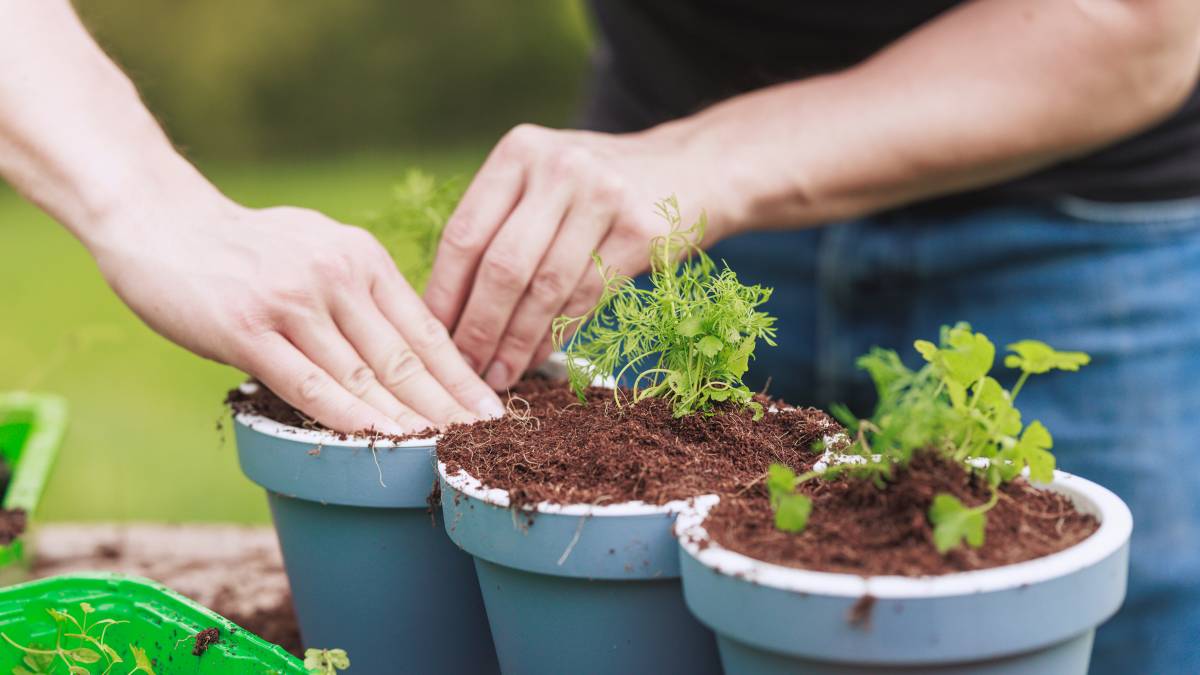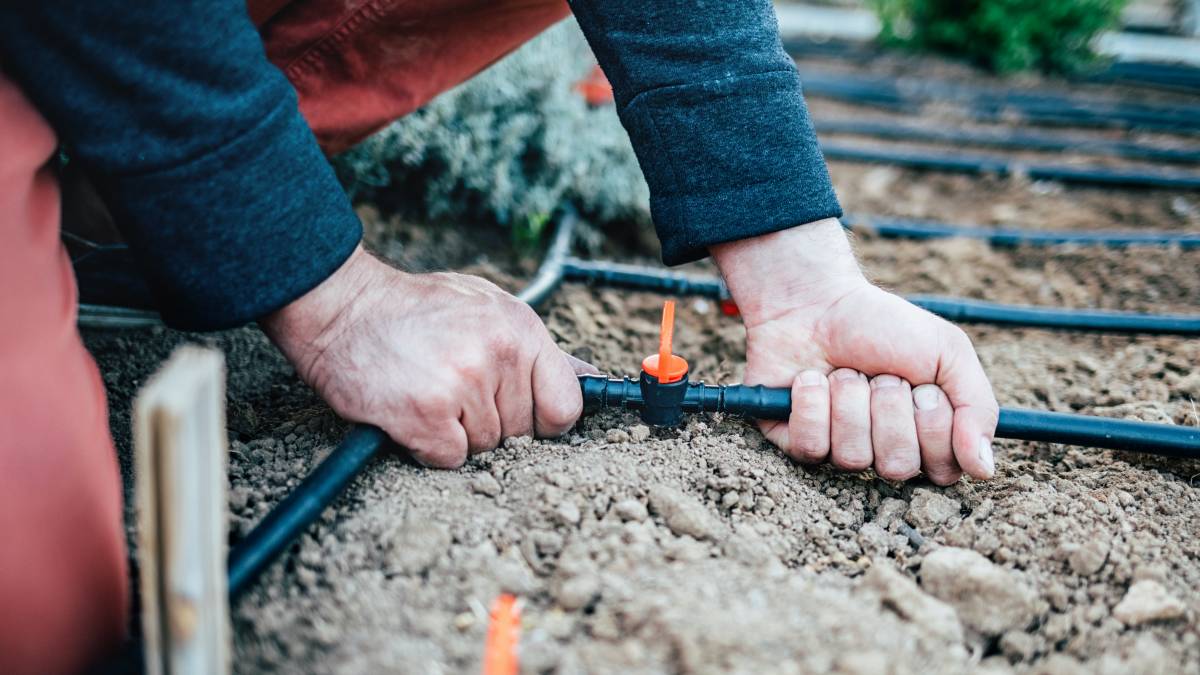
Learn how to level an uneven lawn, everything you need to know
Find a leveling expertLast Updated on
If your lawn is looking a little uneven, and there are one too many dips where it could pose a bit of a danger when people walk on it. Or perhaps you just want to get your sloping garden all on the same eye-line. Well, let’s learn how to level a lawn.
Yes, it may take a little time and patience, but it will all be worth it when you gaze out upon your perfect grassed area each day!
Before you begin, it’s always a good idea to gauge the size of your task by thoroughly checking your yard to determine how much leveling you’ll need and if there are drainage problems. The reason being that uneven ground is often a result of a drainage issue or damage to water pipes.
If this is the case, you’ll want to identify it straight away, so you don’t go to the trouble of leveling your lawn only to have the problem reoccur.
How to determine if you have drainage issues
If you are noticing a lot of low spots in your lawn, especially around any water pipes, you’ll want to have it assessed by a professional drainage system plumber. If they determine you do in fact have a drainage issue, you’ll need to re-grade the lawn along with leveling it, so your surface slopes away from the property. This helps to avoid flooding. Another option can be the installation of an underground drainage system with gravel or flexible drainpipes.
It is important to note that drainage may not be the only cause of bumps and hollows in your lawn. Over time, simple wear and tear, drought, and a range of other issues will disrupt the level of your lawn.
How to level a sloping lawn
The best time of year to level your lawn is in spring, as it is the time when grass seeds flourish. There is sufficient moisture in the soil, and it will make for a far easier (and more successful) process.
There are two processes for how to level a lawn, each suited for different degrees of damage. We measure the amount of damage based on the depth of the dips. One process is suited to low shallow spots, the other for dips deeper than 2-3cms.
Either way, you’ll need a mixture for the top dressing which should feature:
- Two parts of sand
- Two parts topsoil
- One part compost
This mixture will fill out the dips, improve drainage and fill your soil with nutrients.
Pre-watering the lawn
Regardless of the method, you choose below, the days before you plan to level your lawn, you need to give it good water to soften up the soil. This makes it much easier to make more accurate adjustments. Don’t overwater as trying to level mud is very tricky!
Leveling grass with shallow spots
This first leveling method which is best suited for shallow spots can be applied to dips of around 1-2cm lower than your level soil. If you prefer to use rakes for lawn leveling, this method is your best bet.
- Apply the top dressing mix directly by shaking a thin layer over the dip and spreading it evenly with a rake. Do this until the dip is level with the areas around it.
- Compact the soil and give it light water, leaving it to settle.
- Repeat this process for every shallow section.
- Once the soil has settled for a few days, distribute some grass seed followed by more topsoil mix, then give it a gentle pat to compact it.
- Water the sections lightly for the first 48 hours around four times per day to help the seeds germinate then water regularly fostering the grass seed to grow.
Leveling grass with deep spots
If you have sections of your lawn that have sunk more than 2cm, you’ll need a slightly different method.
- Fill the hole with a good soil mix and the topsoil mentioned above mixture and include some new grass seed. The idea here being that getting new grass to grow is easier than trying to keep alive patches that are struggling.
- You’ll want to compact the soil gently and water it to a point where it settles until the hole is filled. The compacting is critical, as skipping this step means the soil will settle over time, and another sunken area will appear quickly. It is also important to note that when it comes to compacting soil, walking over it is not enough, use a shovel or compacting tool and ensure the ground is firm.
How to level a bumpy lawn
For areas of the lawn that are raised:
- Dig out the excess soil making the section as level as you can.
- Use a garden fork and turn over the soil to a depth of about 5cm and clear and rock or large clumps.
- Compact the soil as much as possible to reduce the chance of future sinking.
- Fill the hole with the top dressing mixture until level with the areas around it and rake to break the soil down.
- Sprinkle some lawn seed and water regularly to help foster the grass seed to grow.
- For an extra boost, add a little fertilizer along the way.
No tools? No problem. You can easily level a lawn by hand by applying a thin layer of topsoil. Push down on the soil with your feet—no equipment needed!
How to ensure you have a healthy lawn
Once you have done all of this work to level your lawn, you’ll want to keep it healthy. With a few easy actions, you can end up with the greenest lawn on your block.
Aerating the lawn
First, you should aerate your lawn to make sure the soil beneath your grass doesn’t become overly-compacted. This causes issues with air circulation, water drainage, and nutrient absorption. For successful lawn aeration simply puncture holes throughout your lawn that are about three inches deep.
Watering the lawn
From here, get in the habit of watering your grass deeply and less often. This allows the roots to grow deeper into the soil. Aim for the rule of one inch of water, once a week. If the first 3-4 inches of your soil is dry, then it’s likely time to water again. If you want to water less frequently, use water crystals, sprinkled throughout your grass.
Water absorbing crystals help reduce the number of times you water by around 50 percent! The best time of the day to give your lawn water is early in the morning. This way, you can avoid it being a wasted activity due to evaporation in the hotter or windier parts of the day.
Lawn fertilizers
Finally, you can give your lawn health a significant boost with natural lawn fertilizers. It is always a good idea to use natural fertilizers instead of synthetic ones. They are not only better for your grass but the environment as well. They are also proven to work better and are healthier for your family, pets, and other areas of the yard.
☞ Learn more: Gardening basics
Ready to make your lawn picture-perfect?
Now that you have read this article, you are armed with all of the knowledge you need to rectify any less-than-perfect patches of your lawn. The result will be a flawless green area that will increase the look of your home.
If, however, you don’t quite have the time that needs to be dedicated to the resurrection mission, there are plenty of people who can help! From simple lawn mowing to turf laying, repair, and general lawn care maintenance, you’ll find a host of skilled lawn experts who can help to create the grass of your dreams. You can also get help with lawn fertilization, aeration, and seeding, so there is no excuse for a shabby lawn!
If, on the other hand, you do have the time to dedicate to your garden, why stop at your lawn? We have a range of other helpful articles that will stir your inner-green thumb. The bonus being they help increase the looks and enjoyment of your home! Read about our courtyard design ideas, backyard improvements, and front garden ideas to boost that curb appeal. If you love being out in the garden, there is no shortage of DIY tips and ideas that will significantly change your outdoor aesthetic.
Lawn Levelling FAQs
You will need a topdressing to level your yard. The best mixture is easy to make yourself and can be made up of, two parts sand, two parts topsoil, and one part compost. Once you have used this mixture to level out your lawn, you’ll also want to add some grass seed to help foster the growth of new grass. On top of all of this, you’ll need some significant watering to ensure a healthy process.
The easiest way to rectify any low spots in your yard is by filling the sunken area with topdressing and compacting it to ensure it is firm. Make sure you reach the level of the surrounding areas and add some new grass seed to foster the re-growth of your lawn. After you have filled the low spot to a level point and added the seed, you will need to water generously. This will help the rooting system take effect. In time, the patch will be gone. You’ll then have a healthy spot of new lawn to match the areas around it!
Find leveling experts, fast
Find a leveling expert
Related guides
Related price guides

How much does it cost to clear land?
Read more

How much does a retaining wall cost?
Read more

How much does landscaping cost?
Read more

How much does a water feature cost?
Read more

How much does artificial grass cost?
Read more






